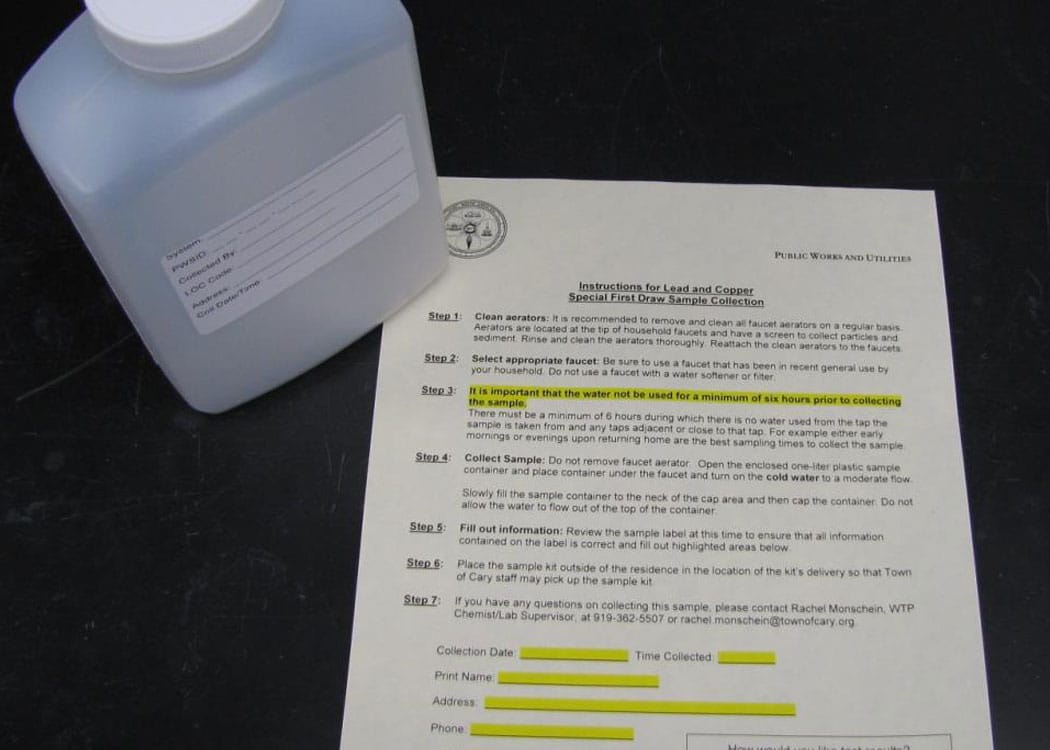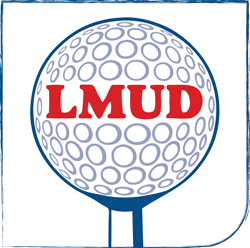Lead and Copper Testing Results, 2019-2020

The Potable Water Department team, led by Department Supervisor Raf Mendoza, at Lakeway Municipal Utility District (LMUD) recently completed their latest round of Lead and Copper Testing. This testing is required by the Environmental Protection Agency (EPA) through a regulation established in 1991 known as the Lead and Copper Rule (LCR), under authority of the 1986 Safe Drinking Water Act (SDWA). A pre-approved list of 60 residents in LMUD’s coverage area voluntarily collected a potable water sample from their home’s faucet in accordance with the rule’s procedures during the October/November 2019 collection period; an additional 60 samples were collected in March 2020. Homes ranged in build date from 1970 to 1998. Results were sent to LMUD’s regulatory agency, Texas Commission on Environmental Quality (TCEQ) as well as individual results to the participating volunteers.
As the operator of a public water system (PWS), LMUD is responsible for providing drinking water that meets all federal and state standards, but cannot control the variety of materials used in plumbing components. Although LMUD’s water system does not contain any lead or copper pipes to distribute potable water to customers, lead and copper can enter drinking water primarily through plumbing materials used in individual homeowner’s plumbing systems, leaching into the water supply as the pipes corrode. Lead pipes are more likely to be found in older cities and homes built before 1986, however brass or chrome-plated brass faucets and plumbing can also be found with lead solder. According to the EPA, exposure to elevated levels of lead and copper may cause health problems ranging from stomach distress to brain damage. Pregnant women and young children are most susceptible. Exposure to lead can also come from paint, dust, soil, air, or food containing lead. Human skin does not absorb lead.
The LCR “action level” for lead is 0.015 mg/L and 1.3 mg/L for copper. According to TCEQ, if a PWS shows an excess of customers exceeding the action levels, the PWS is required to conduct entry point and distribution water quality parameter sampling, entry point lead and copper sampling, and tap water lead and copper sampling. LMUD would then be required to use the sample results to submit a source water treatment recommendation, an optimal corrosion control treatment designation, and a corrosion control study. Lead action level exceedances also require delivery and posting of Lead Public Education. This round of testing did not require any of these steps to be taken.
The analysis of lead in LMUD’s drinking water system, based on the latest round of testing includes:
Round 1: October/November 2019:
- Average: 0.002 mg/L
- Mode: less than 0.001 mg/L
- Maximum: 0.016 mg/L
- Minimum: less than 0.001 mg/L
Round 2: March 2020:
- Average: 0.0014 mg/L
- Mode: less than 0.001 mg/L
- Maximum: 0.012 mg/L
- Minimum: less than 0.001 mg/L
The analysis of copper in LMUD’s drinking water system, based on the latest round of testing includes:
Round 1: October/November 2019:
- Average: 0.275 mg/L
- Mode: 0.120 mg/L
- Maximum: 1.600 mg/L
- Minimum: 0.013 mg/L
Round 2: March 2020:
- Average: 0.2451 mg/L
- Mode: 0.150 mg/L
- Maximum: 1.100 mg/L
- Minimum: 0.0036 mg/L
There was one home in each category that were above action level for the first round of testing; a second round of testing was required to determine if sample contamination could have caused an irregular result. The second round revealed no samples that were above action level.
Mendoza said, “The EPA has made the sampling procedures very strict and without our customers’ willingness to take part in our sampling requirements, the process would have been extremely difficult. On behalf of the entire LMUD Potable Water Department, thank you to each of our customers who participated! We will need the same customers to help us out again after the first of the year for the second round of sampling.”
LMUD’s potable water is continually tested and monitored throughout the year using online meters and, based on several parameters, Mendoza and his team make adjustments to water treatment methods as needed to ensure superior quality water is maintained. Yearly additional testing requirements result in the annual Water Quality Report, also known as a Consumer Confidence Report (CCR), which can be found here. CCRs are released with each June billing cycle with results from the previous year’s testing period.
Any customers served by a PWS who are concerned about their lead exposure can have their water tested by a state certified laboratory. You can find one in your area by calling the Safe Drinking Water Hotline at 800-426-4791 or visiting www.epa.gov/safewater/labs. When your water has been sitting for several hours, you can minimize the potential for lead exposure by flushing your tap (let the water run) for 30 seconds to 2 minutes before using water for drinking or cooking.
For additional information, visit the EPA’s website on Basic Information about Lead Drinking Water or TCEQ’s website on Drinking Water Lead and Copper Program.
Originally Posted: 11/27/2019, Updated 12/10/2019, 4/23/2020

 You are now being redirected to the WaterSmart page.
You are now being redirected to the WaterSmart page.